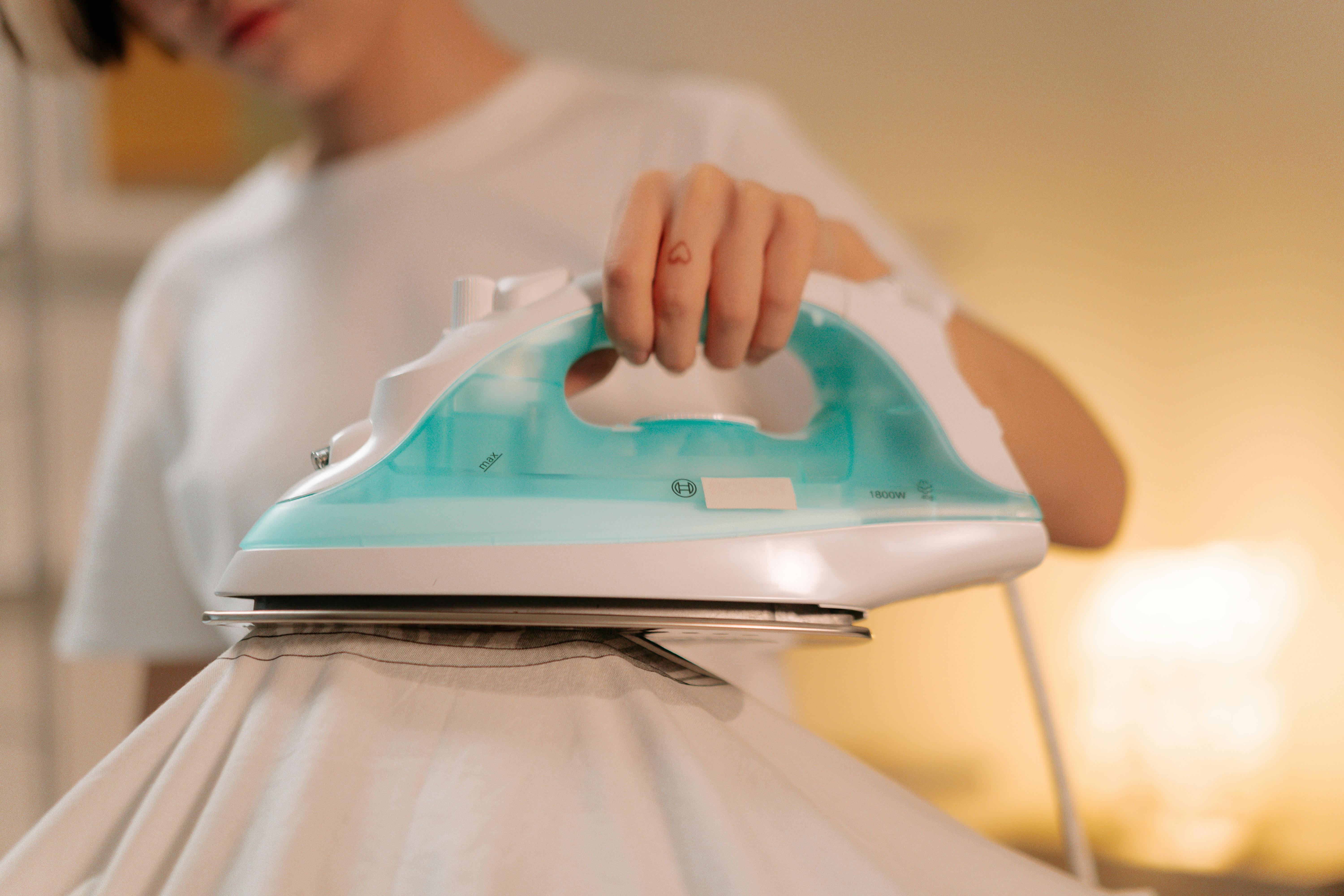
We’ve all been there. You’re halfway through a pile of laundry when suddenly your iron starts dragging or sticking, and you notice a dreaded burnt patch on the soleplate.
Often caused by synthetic fabrics like polyester melting onto the hot surface, these stains not only look unsightly but can ruin your clothes if not sorted quickly.
The good news? There’s a simple, safe way to clean your iron and keep it gliding like new. Here's how!
Burnt On Stains? Here's a Tried and Tested Hack
If your iron’s soleplate has burnt on residue, especially from synthetics like polyester, don’t panic. You can usually lift off the gunk with nothing more than an old cotton tea towel or shirt.
Step by Step:
Dampen the cotton cloth – It should be wet but not dripping and definitely something you don’t want to wear again.
Set your iron to its highest temperature – (Check your manual first to confirm it’s safe to run the iron at full heat.)
Lay the wet cotton flat – ideally use an ironing board cover or towel to add extra protection from damage.
Iron directly onto the cloth – Move the iron gently over the damp cotton. The steam and heat help loosen and lift the burnt on residue.
Wipe the soleplate while warm – After ironing, switch the iron off and allow it to cool slightly. Use a clean dry cloth (once the iron is unplugged and cooled slightly) to remove any softened residue.
It might not remove everything the first time around but this method can work wonders. The sticky build up transfers to the cloth, not your next outfit and you get the glide back in your iron!
Always Check Your Manual First
Before trying any cleaning method, it’s worth looking at your iron’s user manual. Some models may have specific recommendations (or warnings) for cleaning the soleplate.
Other Safe Soleplate Cleaning Ideas
If the cotton cloth trick doesn't do the job entirely, here are a few other gentle methods that are safe for most irons:
Bicarbonate of soda paste: Mix with cool water, apply to a cold soleplate with a soft cloth, then wipe clean. Ensure to avoid the steam holes as the paste could get trapped inside causing damage to the steam vents.
Specialist soleplate cleaners: Available at most supermarkets and homeware stores. Always refer to the user manual and instructions before using.
Avoid abrasive pads or scourers – They can damage the soleplate’s nonstick coating.
Don’t Forget to Descale
If your iron’s spitting, sputtering or not steaming as it should, limescale could be the culprit, especially if you live in a hard water area.
Here’s how to descale your iron:
- Check for a descaling button – Some models have a dedicated calc clean or descaling button. Use it regularly.
- No button? Use the steam boost – Fill the tank with a white vinegar and water solution (50:50), heat the iron, then activate the steam burst repeatedly. Do this over the sink or an old towel.
- Rinse thoroughly – Follow up with a few full tanks of clean water to remove any remaining vinegar smell.
Just like a kettle or a steamer, regular descaling keeps your iron working efficiently and prolongs its life.
Read our blog: Garment Care: The cleaning essentials for your steam generator or iron
Final Tips for Iron Maintenance
- Empty the water tank after each use to prevent standing water and mineral build up.
- Store upright to avoid scratches on the soleplate.
- Use distilled or filtered water if your manual recommends it.
Keeping your iron clean and in good shape doesn’t have to be a chore. Just a quick bit of maintenance now and then will save your clothes and your patience in the long run.
View the full range of Irons here